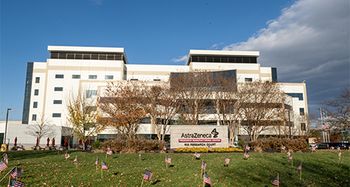
- Pharmaceutical Commerce - April 2010
Today's global biopharma cold-chain market is $5.1 billion, growing to $6.6 billion by 2011
Pharmaceutical Commerce has published a first-ever study of the booming business in temperature-controlled shipping of biopharma products, assessing the impact of new regulations, new packaging and shipping technologies, and the faster-than-average growth of biopharma products requiring cold-chain shipping. While the North American market will grow by 15% over the 2008-2011 period (or roughly 5% annually, in line with the overall pharma market), the global market will show a growth rate of double that.
“Cold Chain Biopharma Logistics Sourcebook 2010” surveys growth rates for pharma, biotech, vaccines, blood products and clinical materials, US and international regulatory bodies such as FDA, USP, PDA, IATA, MHRA and others, and air, ground and ocean carrier modes. It includes packaging materials and technologies, refrigeration systems and instrumentation.
“This activity is being driven by a combination of where the biopharma industry is going—toward more biologics—and the global industry’s push into emerging markets,” says Nick Basta, editor in chief of Pharmaceutical Commerce and a co-author of the report. “Based on projected market growth rates, seven of the top 10 global pharma products in 2014 will require cold-chain handling. Further, while a lot of attention was paid in the past year toward preparing for the H1N1 flu season, behind the scenes there is dramatic growth in the world vaccine market, both for infectious diseases and as treatment for other conditions.” Vaccines will grow on average 8% per year through the next five years, based on various industry estimates.
Meanwhile, the clinical trials industry, which has been expanding globally in recent years, will add more volume during the coming decade. “There was a report recently of just one clinical-trials materials (CTM) shipment requiring its own chartered jet, carrying 65 metric tons of temperature-controlled material, from Europe to the Far East,” says Basta. “CTM has evolved into its own logistics market.”
On the horizon, there is the probability that biosimilars, biotech products made by other than the original inventor, will be hitting the market by mid-decade. In contrast, new technologies to turn refrigerated biotech products into room-temperature-storage products will also kick in, affecting some product temperature and storage requirements.
“It’s important to note that not all biologics require cold-chain handling, nor are all small-molecule products free of that requirement,” says Basta. “But when you look at how national and international regulations are evolving, you see that even room-temperature products will soon require additional monitoring steps that add complexity to the transportation process.”
For biopharma manufacturers, the challenges are not in developing new technologies to handle shipments, but in process changes to manage the regulatory and reporting demands cost-effectively. “There are a growing number of validated technologies and transportation process options, particularly for real-time monitoring of a shipment’s condition,” says Basta. “Compliance officers and supply chain managers have many choices, and need not assume any longer that just because a shipment might be worth millions of dollars, it needs to have high-expense logistics service.” One example of this is the use of super-insulated packaging that can allow for a package to be shipped by second-day service rather than overnight delivery, or even to shift from air freight to truckload.
Rafik Bishara, PhD, head of the Pharmaceutical Cold Chain Interest Group, was editorial advisor. Cold Chain Biopharma Logistics Sourcebook 2010 is available for purchase from Pharmaceutical Commerce, 22 Bayview Ave., Manhasset, NY 11030 USA, tel: +1 516 869 0334. Press inquiries: Nick Basta, Pharmaceutical Commerce, +1 718 282 6112. E-mail: [email protected].
Articles in this issue
over 15 years ago
PBMs contact Congress over proposed USPS five-day delivery scheduleover 15 years ago
FDA puts a spotlight on cargo theft of life sciences productsover 15 years ago
New study sets benchmark for post-marketing surveillance processNewsletter
Stay ahead in the life sciences industry with Pharmaceutical Commerce, the latest news, trends, and strategies in drug distribution, commercialization, and market access.





